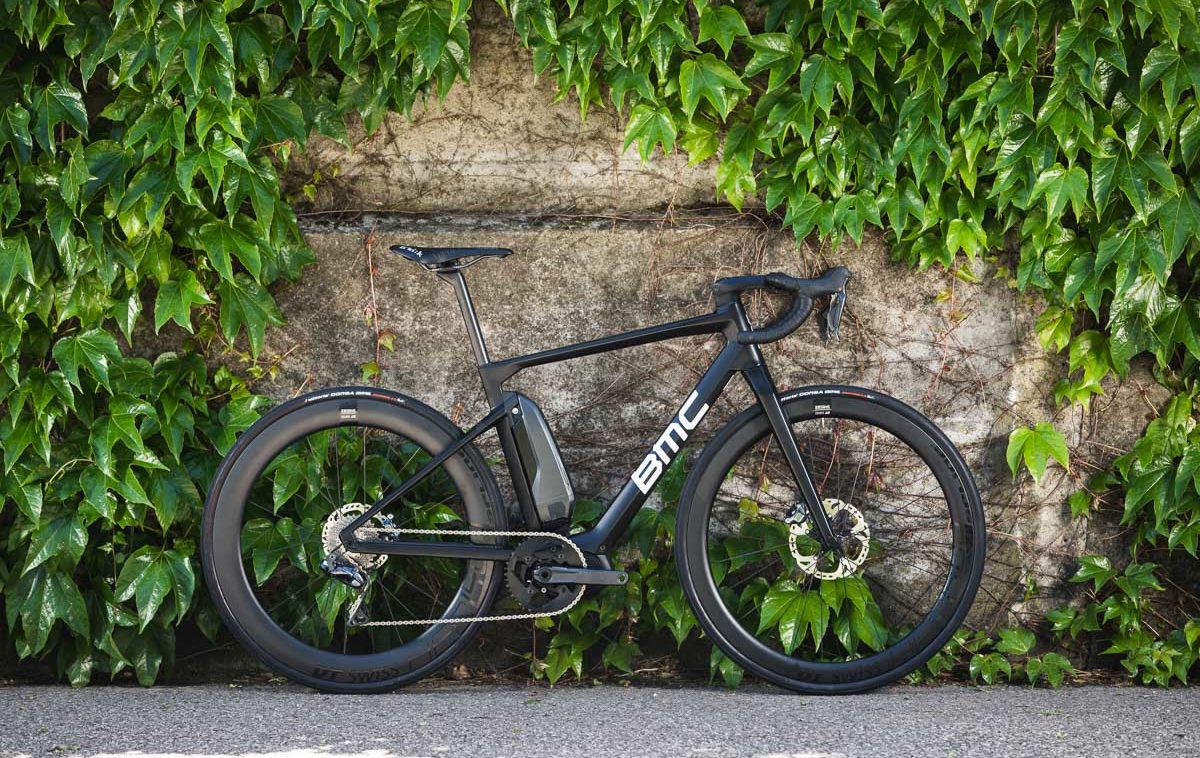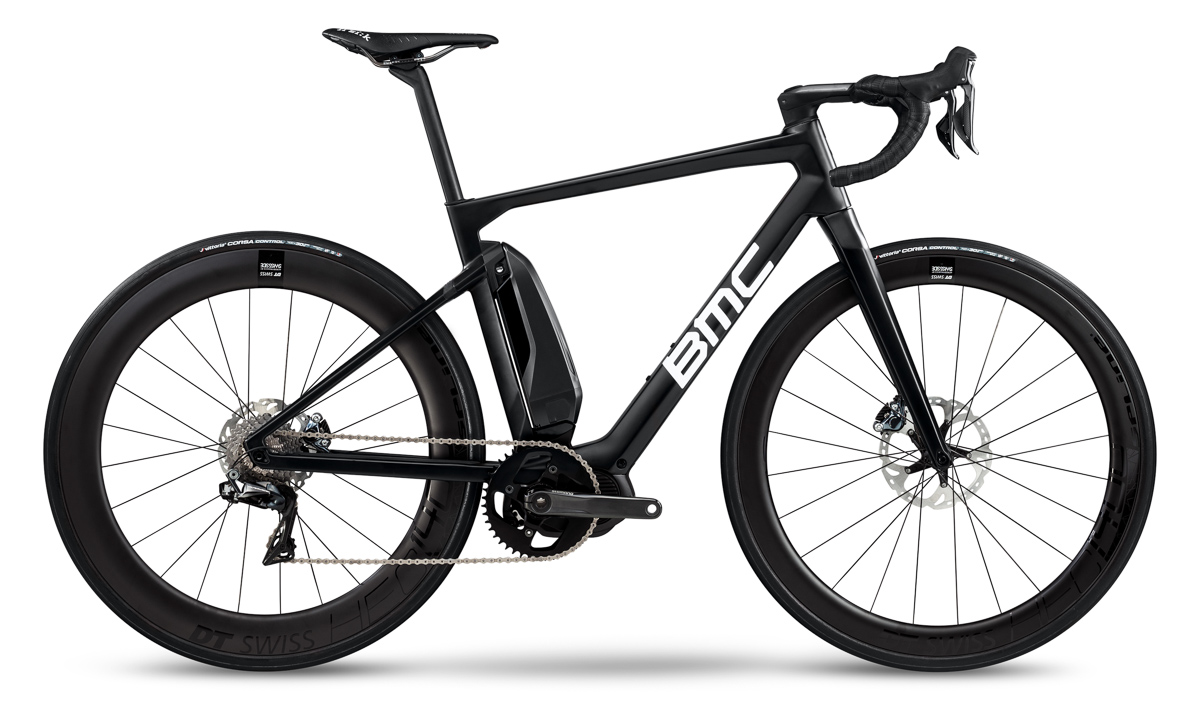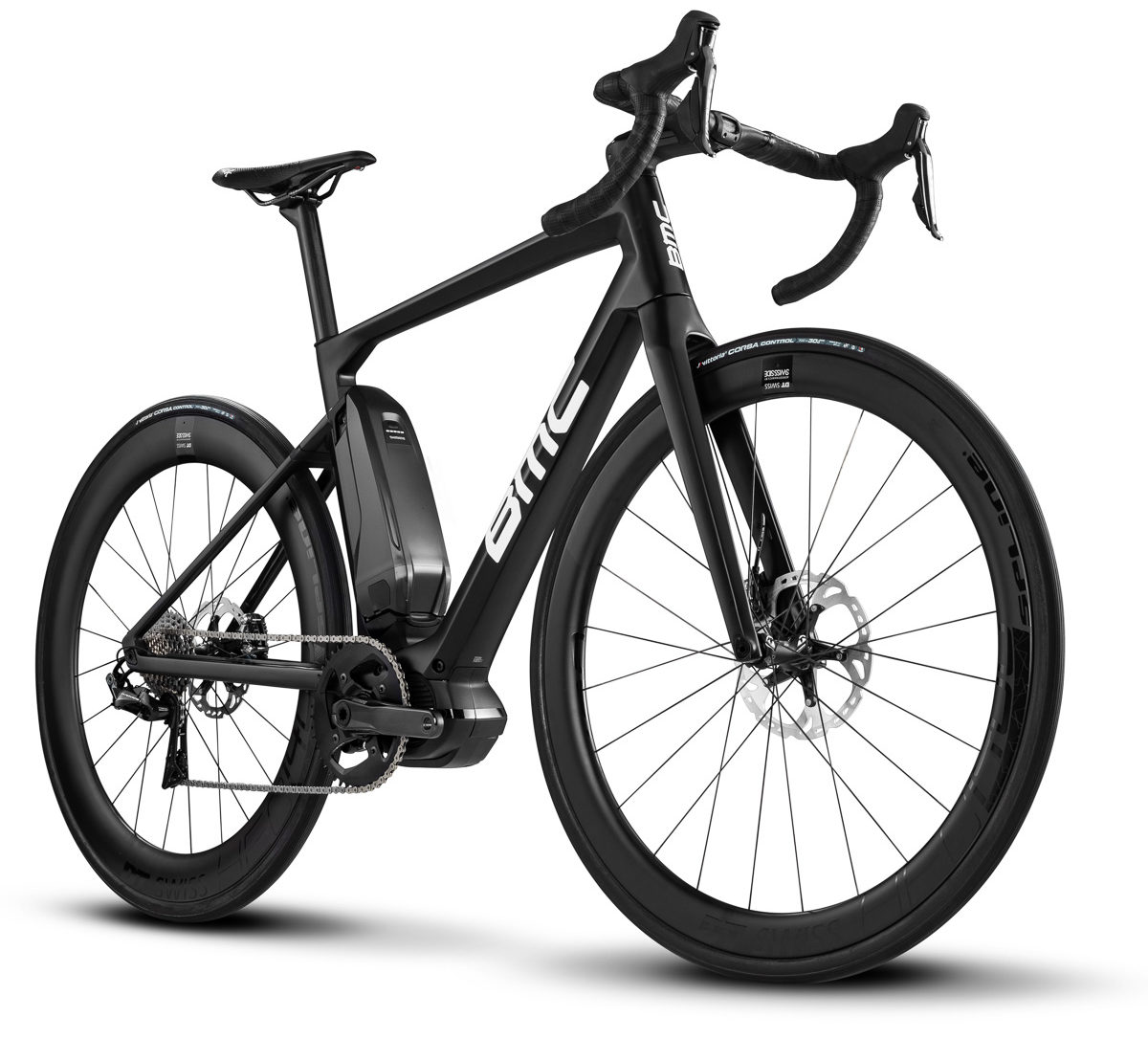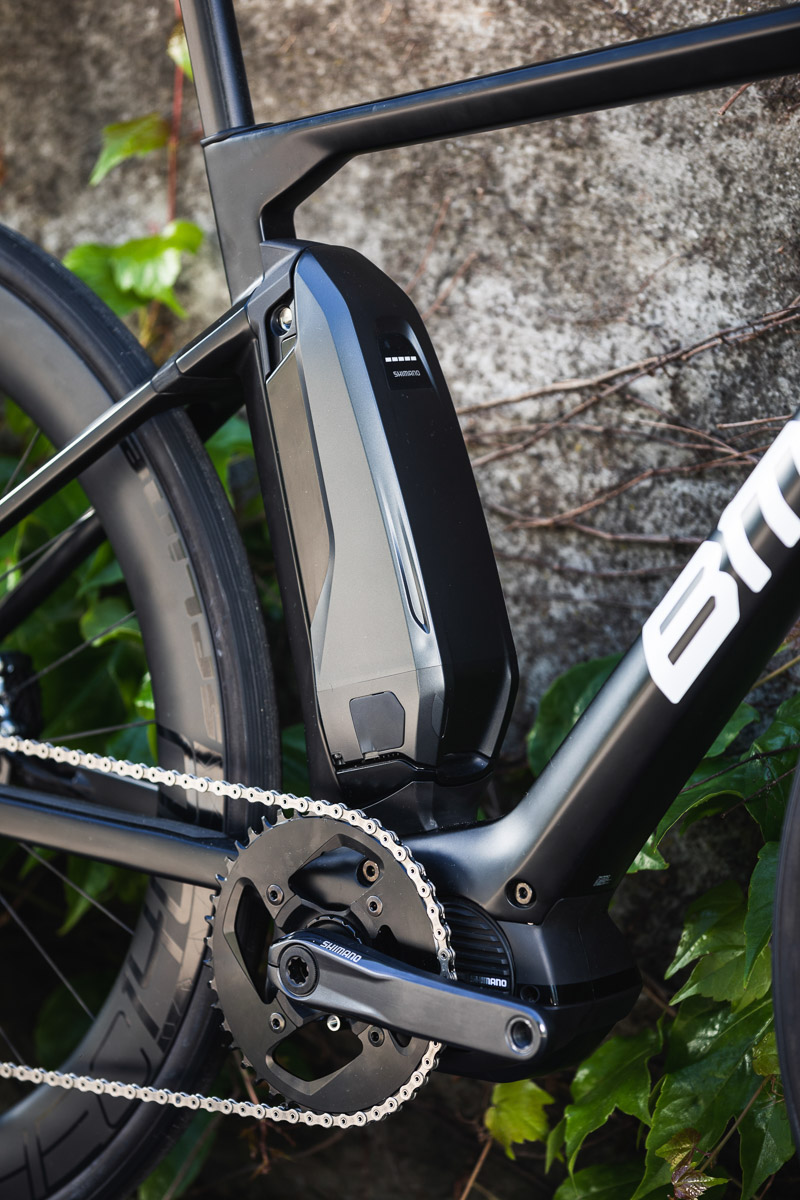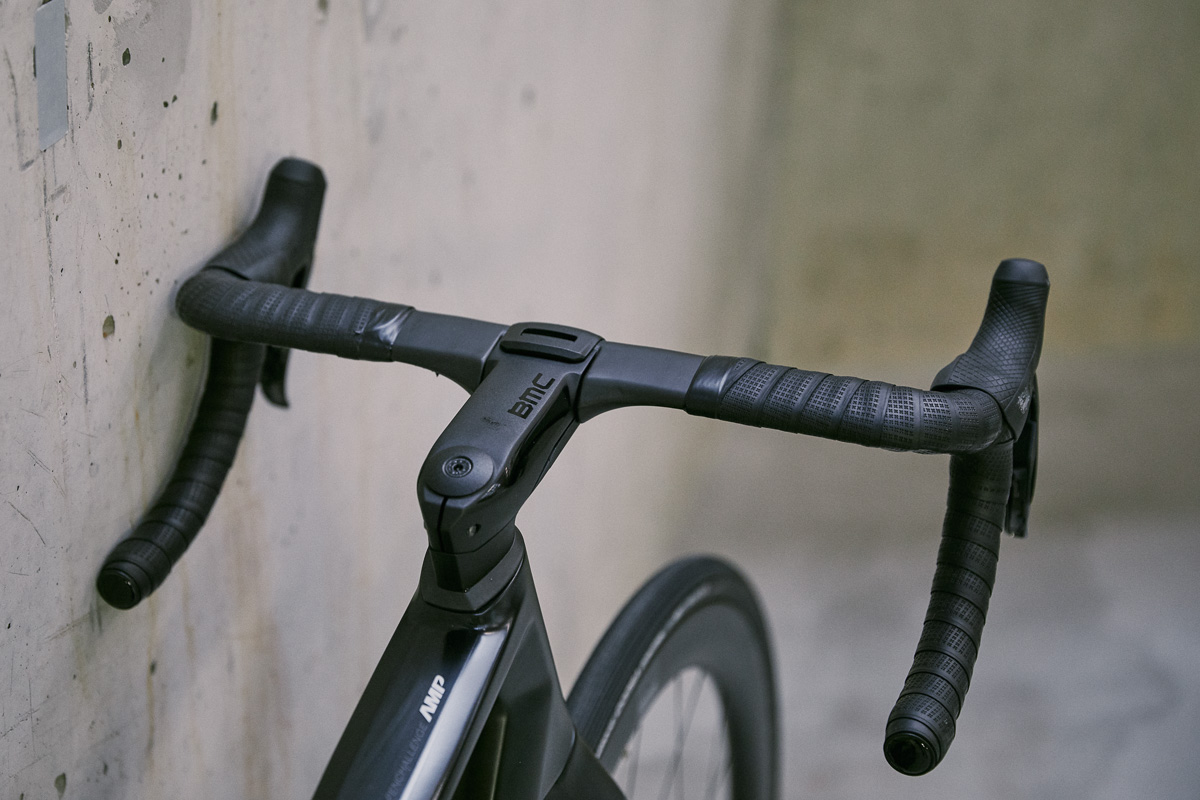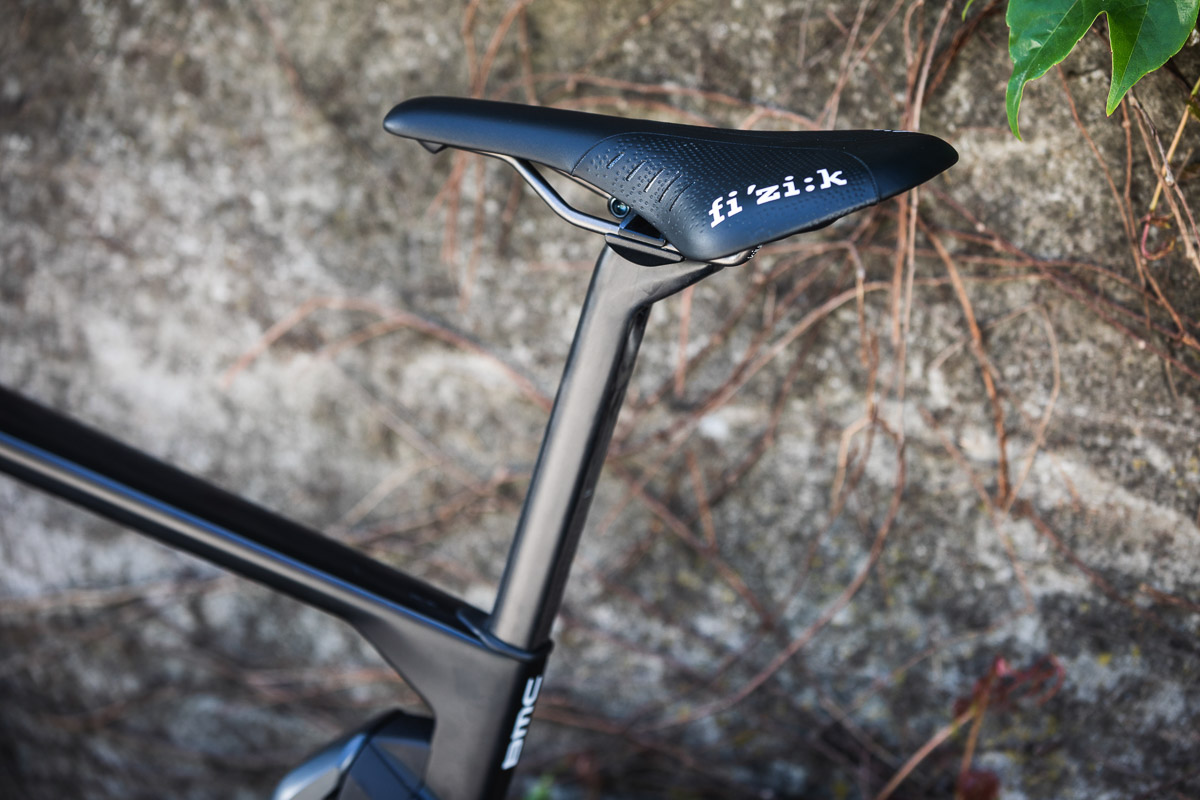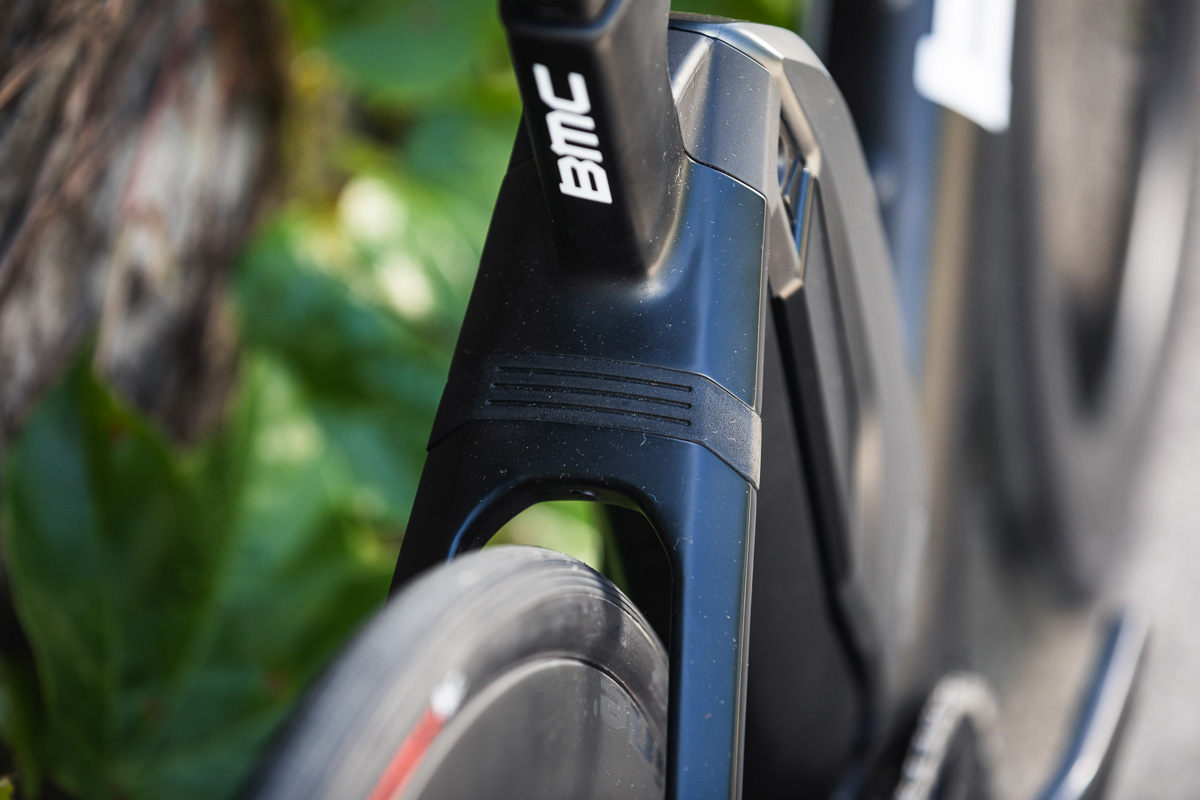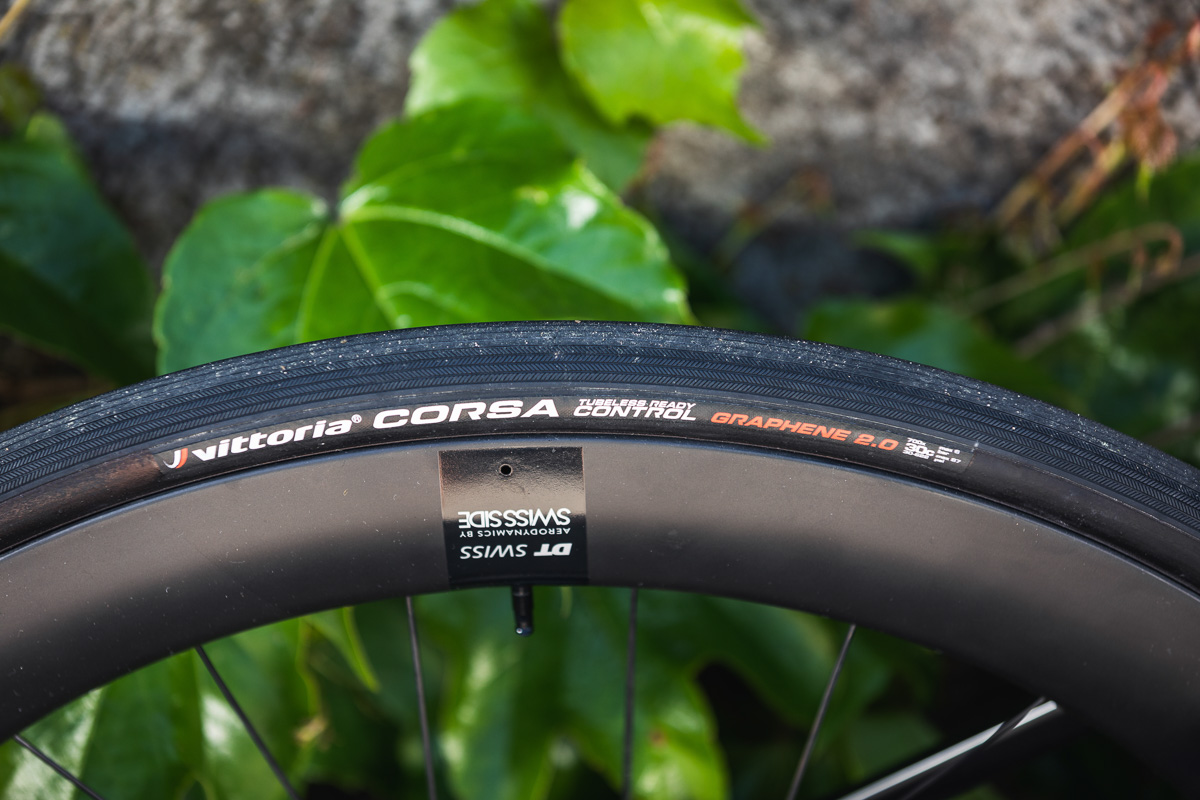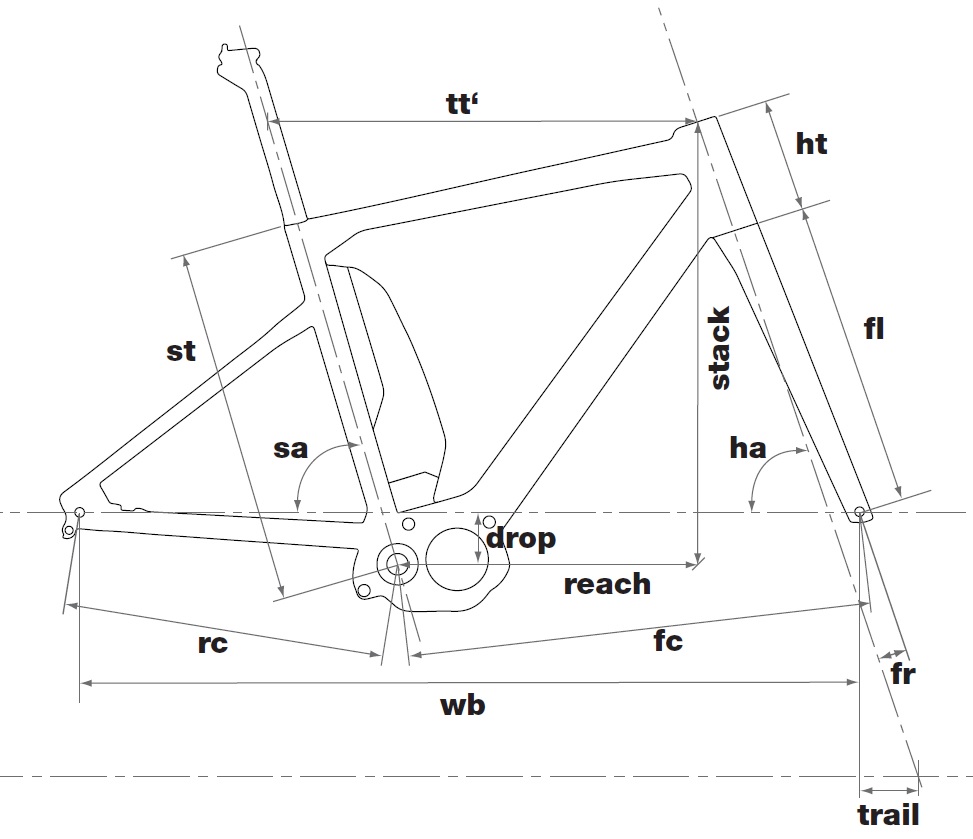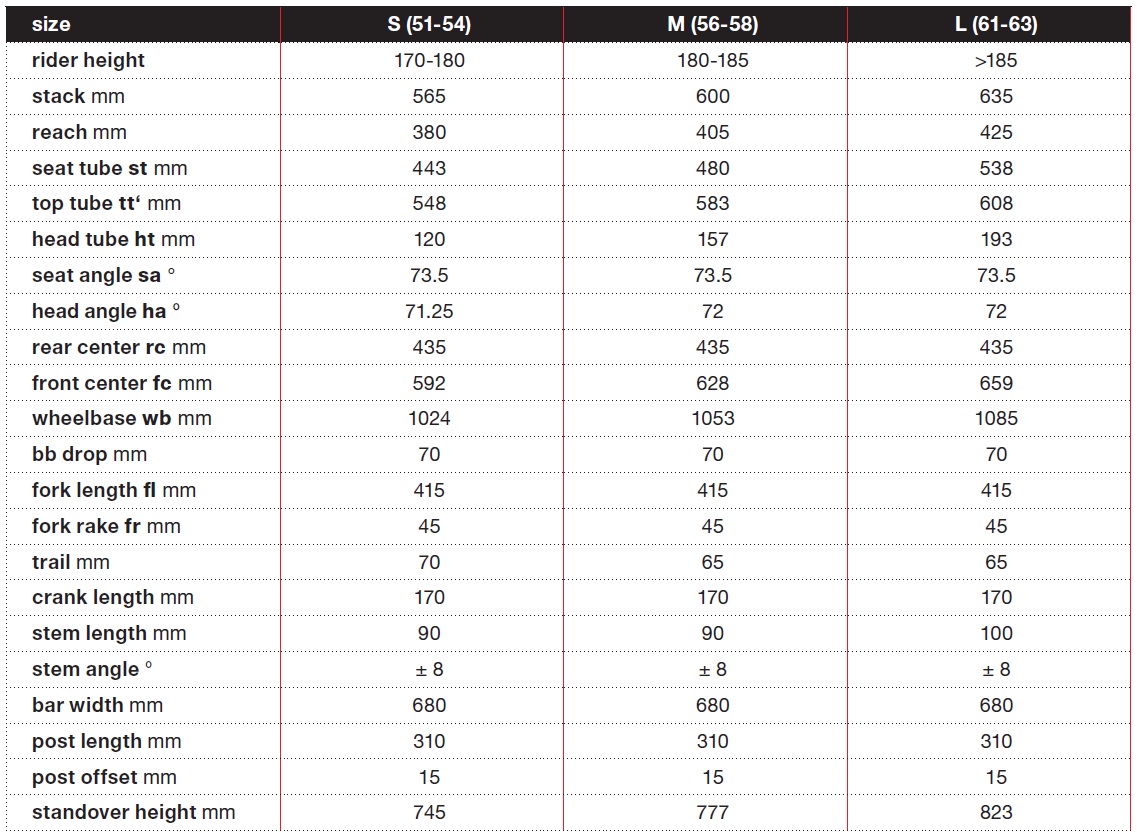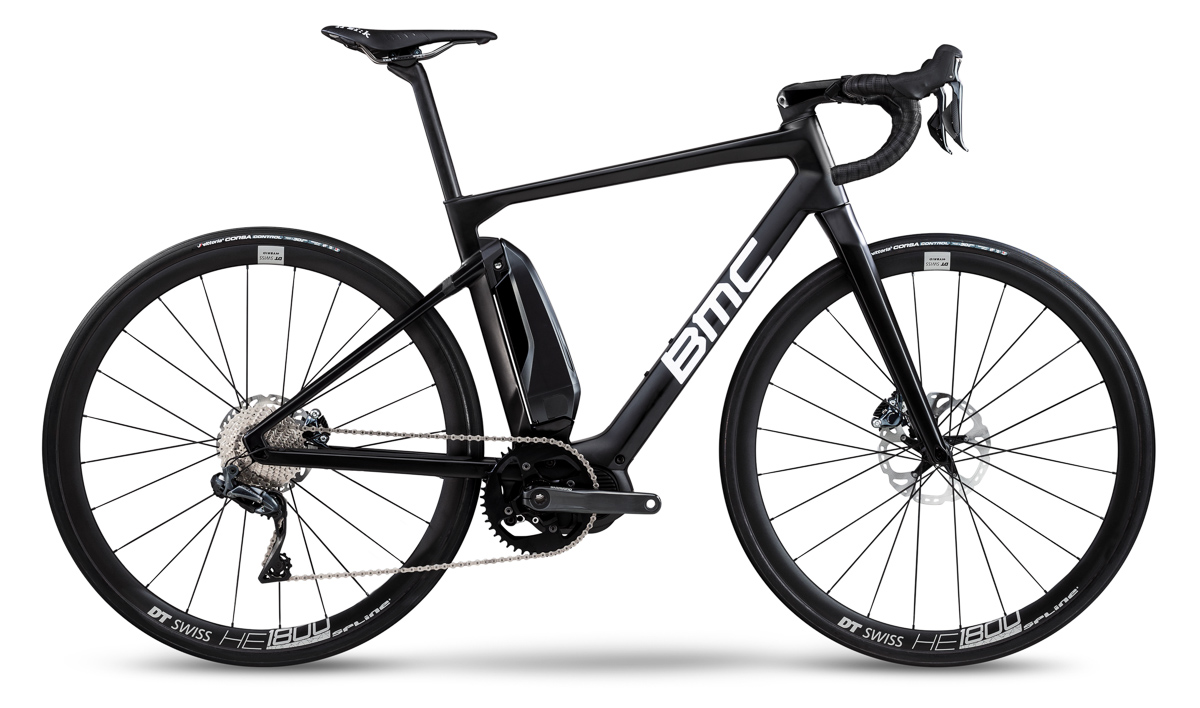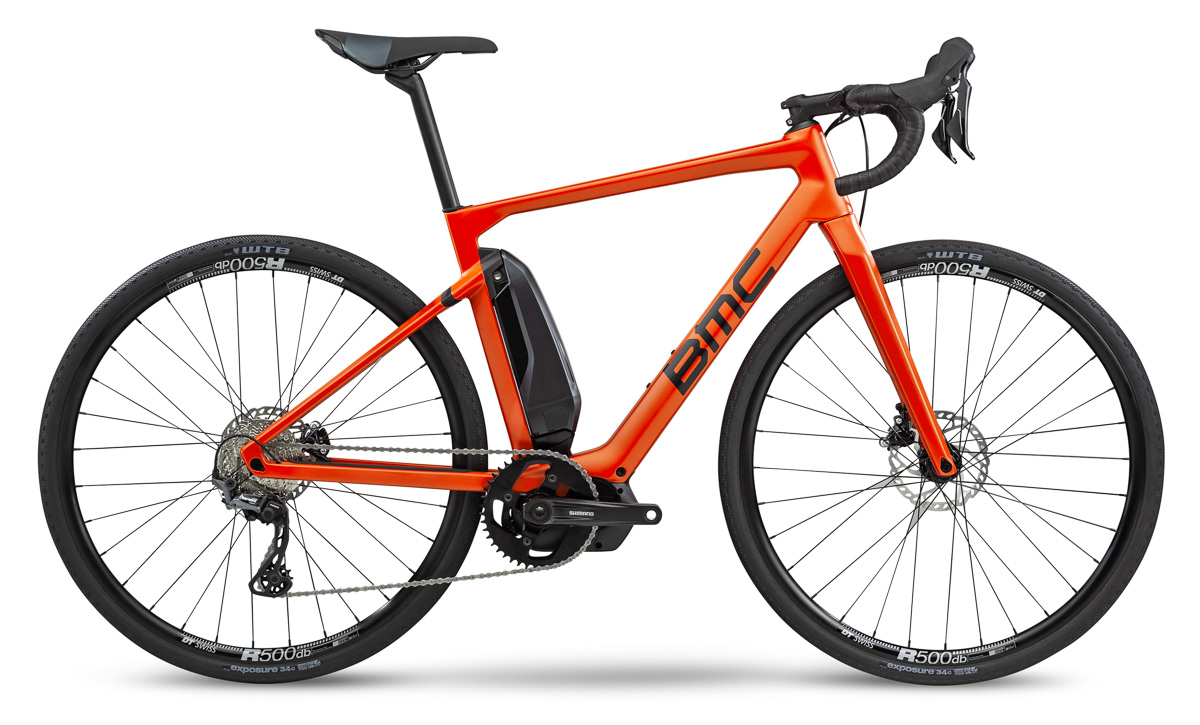BMC announced a new road version of their Alpenchallenge AMP frame, giving them a serious competitor in the world of e-road bikes. Using the highest-powered Shimano E-8000 motor and huge capacity 504Wh battery, it blasts uphill and greatly expands the terrain and speed available to you – along with a huge dose of fun.
BMC Alpenchallenge AMP Road e-bike with Shimano STEPS E8000 system
BMC is very familiar with road bikes and e-bikes, but until now didn’t have an official combination of the two. The new Alpenchallenge AMP Road takes their existing AMP Sport flat bar road bike, and adds a full kit of drop bars, wheels, and other road-worthy components.
While it might seem that this was an easy task, or perhaps that it can’t be a legitimate road bike (being based on a flat bar sport bike), our test rides and technical investigation revealed otherwise. We had a chance to try out the AMP Road in-person at the BMC Swiss headquarters, done in tandem with our recent coverage of the 2020 Roadmachine.
BMC had handling in mind from the get-go, placing the weight of the motor and battery as low as possible, and centered between the two wheels. In addition, the bike doesn’t bother to conform to UCI regulations, which can cause challenges in certain bike sizes due to limitations with wheelbase (often having a negative effect on handling). We’ll get in to more detail in our full ride report, but I’ll say this for now: It handles and descends superbly, and feels 100% like a road bike should.
The heart of the system is the Shimano STEPS E-8000 motor (250w, 70Nm output), weighing 6.2 pounds. The choice of this system is notable because it’s marketed by Shimano for “extreme MTB riding”. In other words, it has a ton of power… think V8 swap into a Miata. Remarkably, the system manages to feel quite smooth and natural, despite giving you legs that would make pro cyclists jealous.
Note that the bike carries a Class 1 designation, limiting European models to an assistance cutoff at 25kph, while US versions go to 20mph (32kph).
That big motor uses up a lot of juice, requiring a large 504 Wh battery. The complete package achieves BMC’s goal to provide the most power and range possible in a road package that weighs less than 15kg total (33 pounds). The downside is that you lose a seat tube bottle mount, so be prepared to carry one in a jersey pocket.
BMC takes advantage of the latest Shimano update that allows you to control the three settings of power output using the left Di2 shifter, eliminating the need for a separate handlebar controller. When combined with their ICS stem system, the result is an incredibly clean front end for an e-bike (or any bike, for that matter).
The frame adheres to all of the current trends of 2019, including flat mount brakes, 12×100 front thru axle, 12x142mm rear thru axle, and tapered 1.5 to 1.125″ fork. The seatpost also follows the near-‘standard’ of being proprietary, using the BMC D-shaped design. It’s available in 0mm and 15mm offset versions to handle different fit needs. Note that this is the ‘older’ design of the D-shaped post, and it’s not cross-compatible with the new design used on the Roadmachine.
The rear end of the bike uses BMC’s Micro Travel Technology (MTT), which is a soft-tail suspension design with 10mm of travel. It uses a special elastomer from the automotive industry, along with two internal guided pins that retain stiffness of the rear triangle. If you ride behind someone else with this system, you can see going through its travel, and it does help to take the edge off of rough roads. The only thing it leaves you wanting is a similar system on the front end of the bike.
The higher-spec models of the Alpenchallenge AMP Road come with 30mm tires, while the entry spec comes with 34mm. This is an appropriate size, but we should mention that the frame and fork can clear 40mm tires – making the AMP Road a viable option for gravel riding.
The geometry chart of the Alpenchallenge AMP Road reveals what might be the only tangible downside of the frame, which is somewhat limited sizing. After speaking with BMC staff members in-depth, they acknowledge that this may be a limitation for some, but they tried to hit numbers that would work for the vast majority of people. I rode the medium size bike, which had an appropriate reach, but I found the head tube too short for my long-legged 6’1″ frame (a common problem for me). Had my test bike been equipped with a traditional stem rather than the ICS system, I’d be able to flip it up for a more comfortable position – and this is the route I’d take if I owned the bike.
Spec, Pricing, and Availability
Three levels of spec are available for the Alpenchallenge AMP Road complete bike, with no frameset option at this time. All spec levels use 180mm front and 160mm rear rotors, a 44 tooth chainring size, and 11-34 cassette. Frame weight clocks in at 1,415 grams, with a 160 gram seat post and 528 gram fork.
The top-end Alpenchallenge AMP Road LTD ($8,499 USD) features a mix of Dura Ace and Ultegra Di2, DT Swiss HEC 1400 Spline DB 47 wheels, and the flattened aero version of BMC’s ICS bar and stem.
The Alpenchallenge AMP Road One ($6,999 USD) has full Ultegra Di2, DT Swiss HE 1800 Spline db 32 wheels, and the standard round version of the ICS bar and stem.
The Alpenchallenge AMP Road Two ($4,699 USD) has more of an all-road spec, using a Shimano GRX drivetrain, a standard bar/stem, Formula hubs, DT Swiss R 500 db rims, and 34mm WTB Exposure tires. It also uses a standard fork, bar, and stem, opening up fit options beyond the ICS system.
All Alpenchallenge AMP Road models are available immediately through BMC dealers worldwide.
